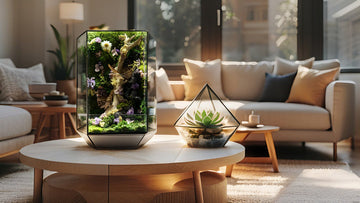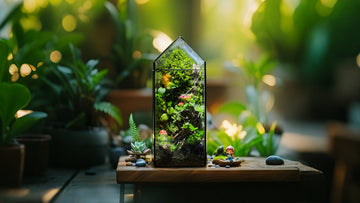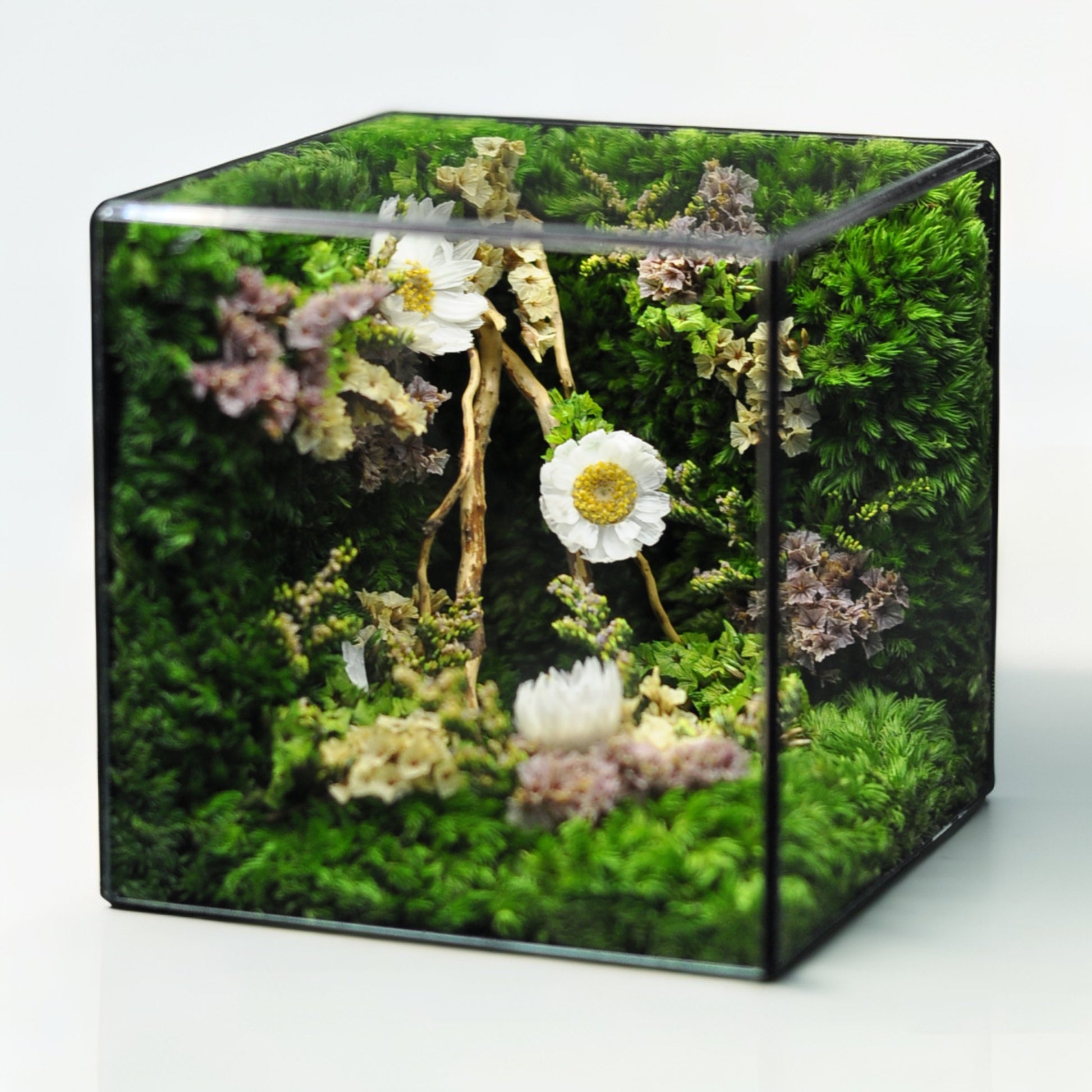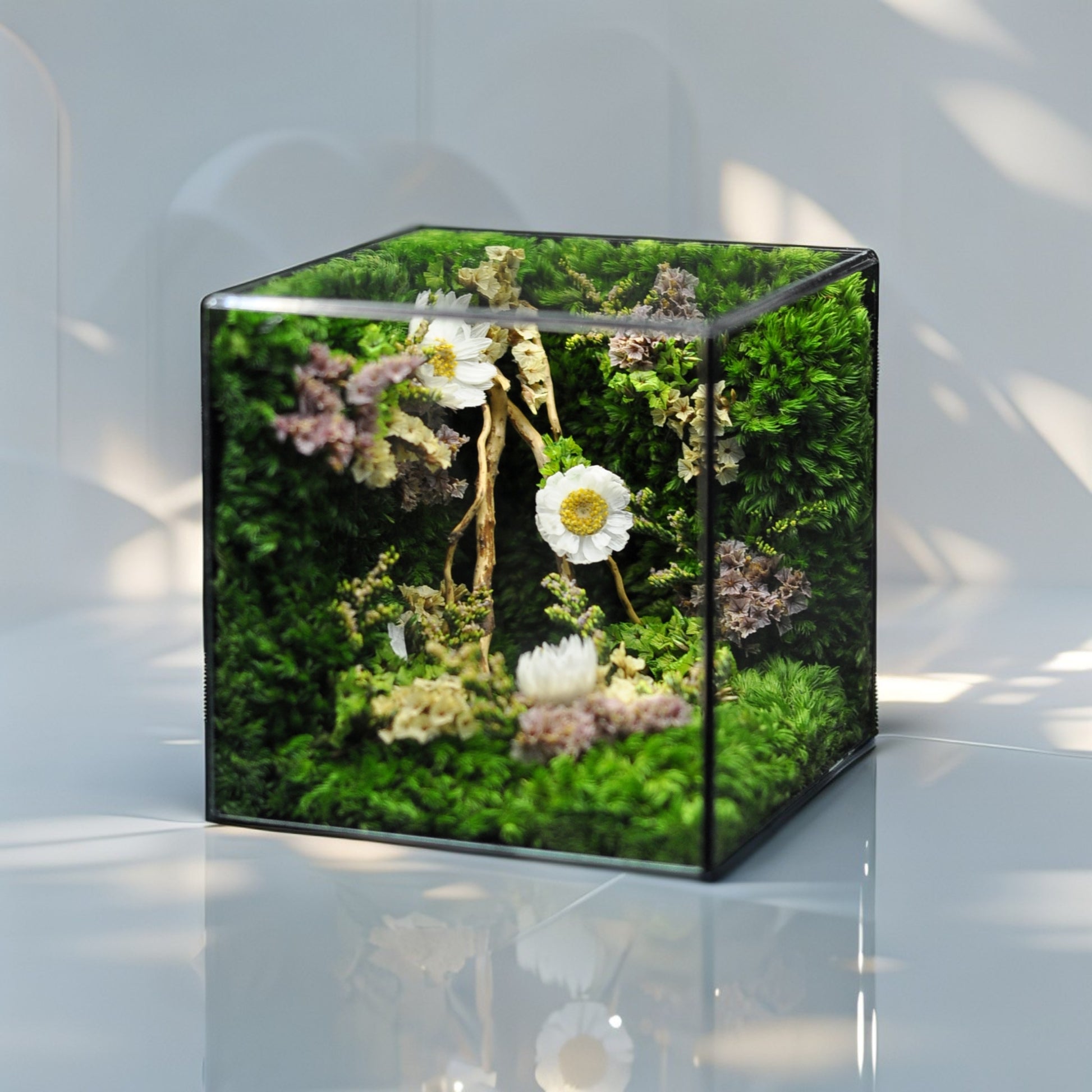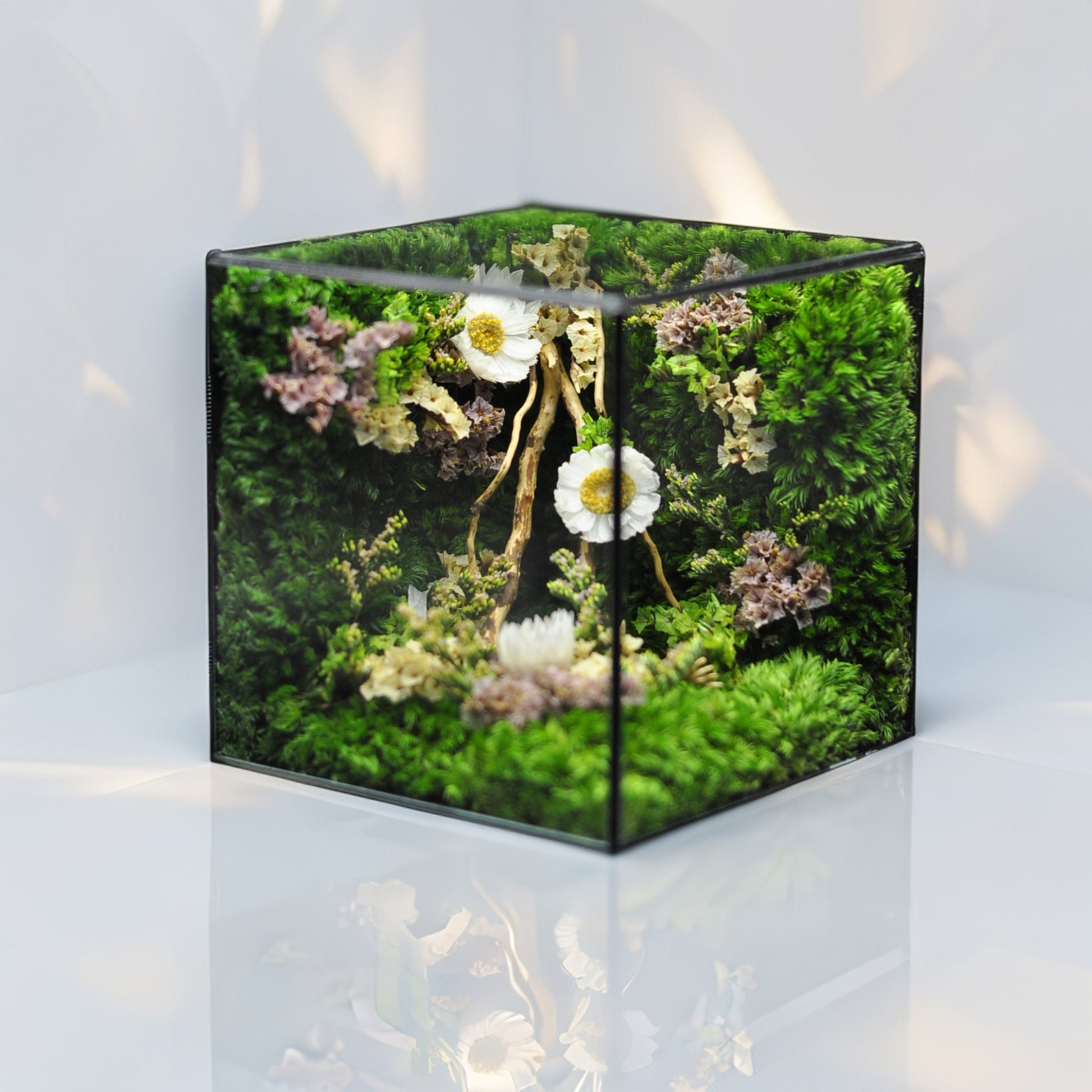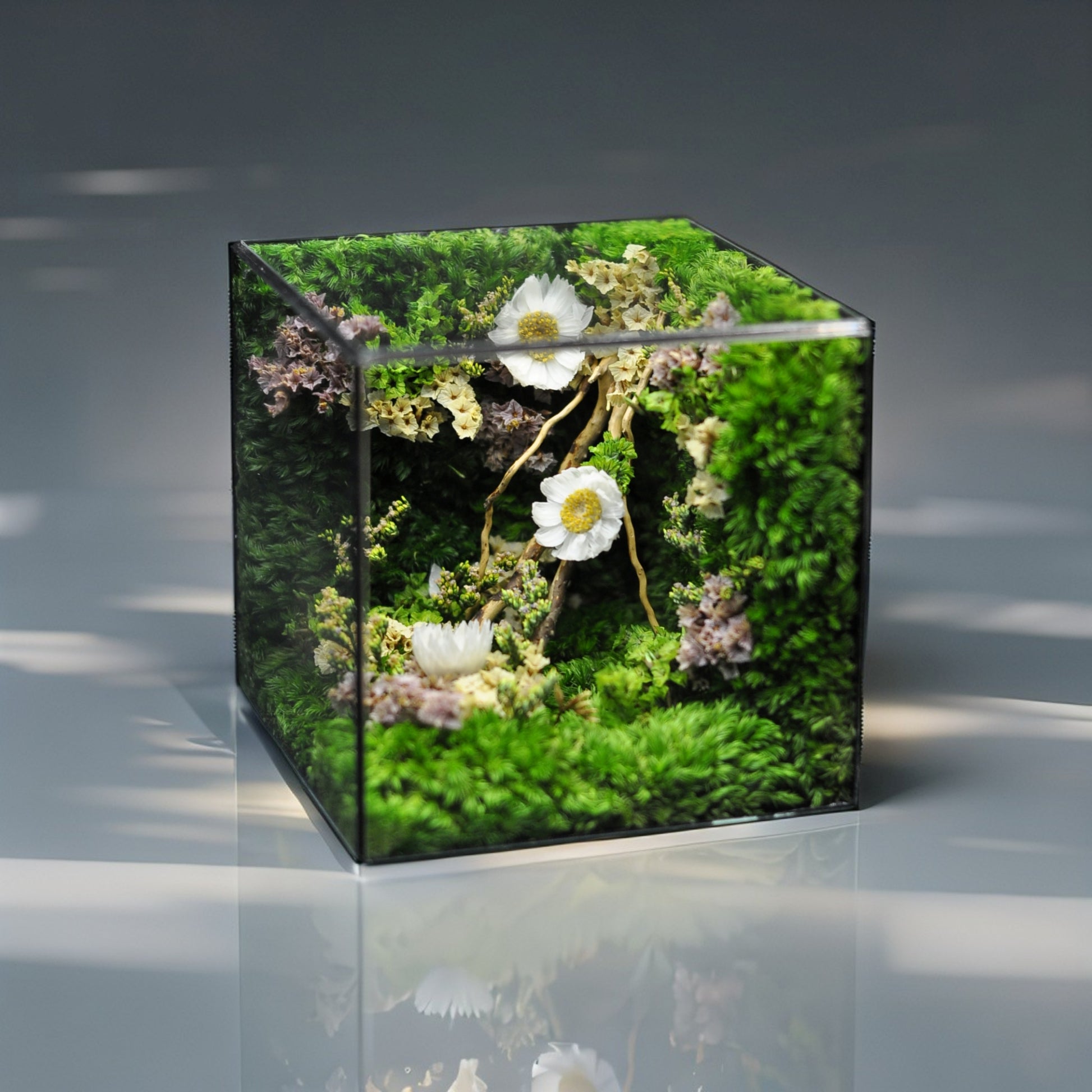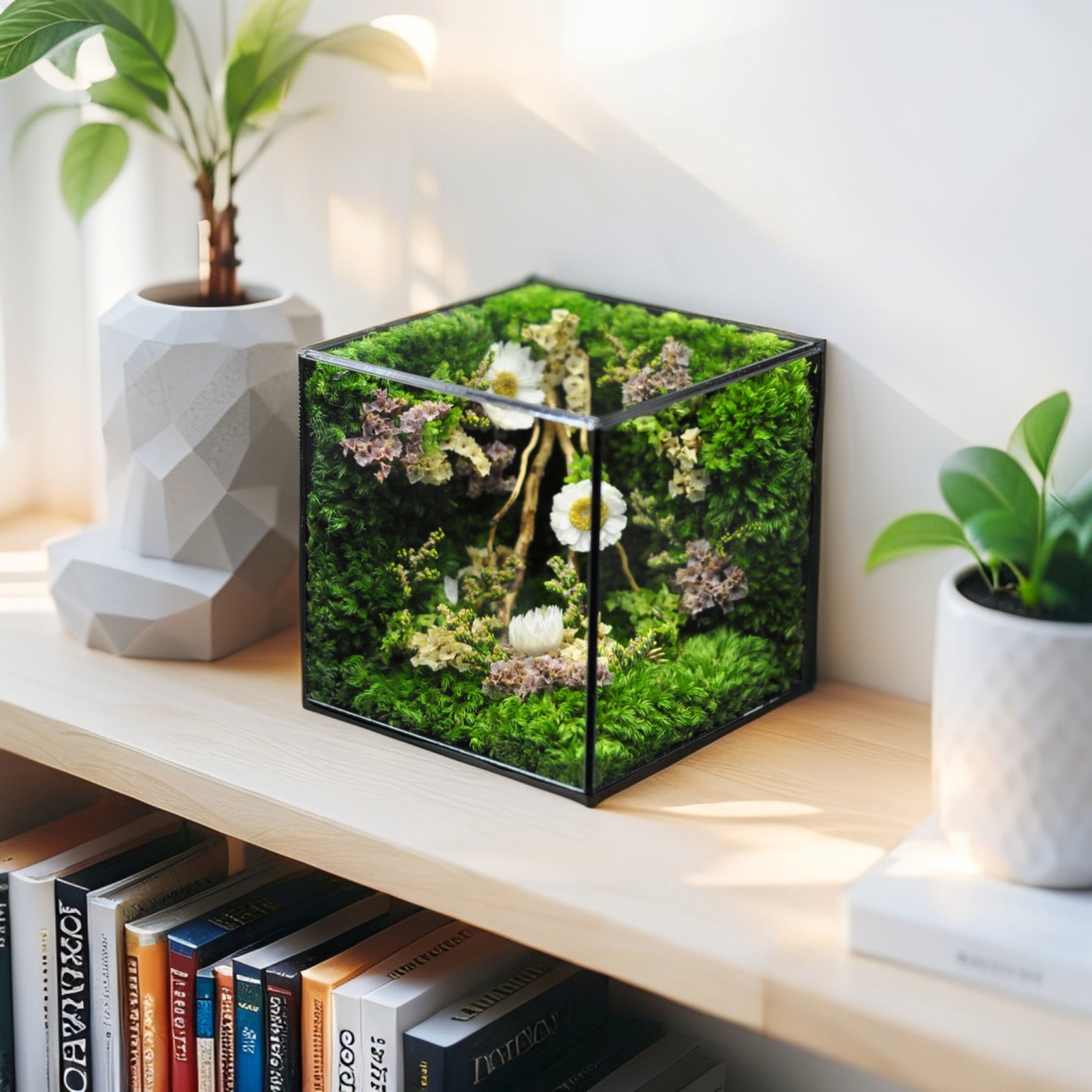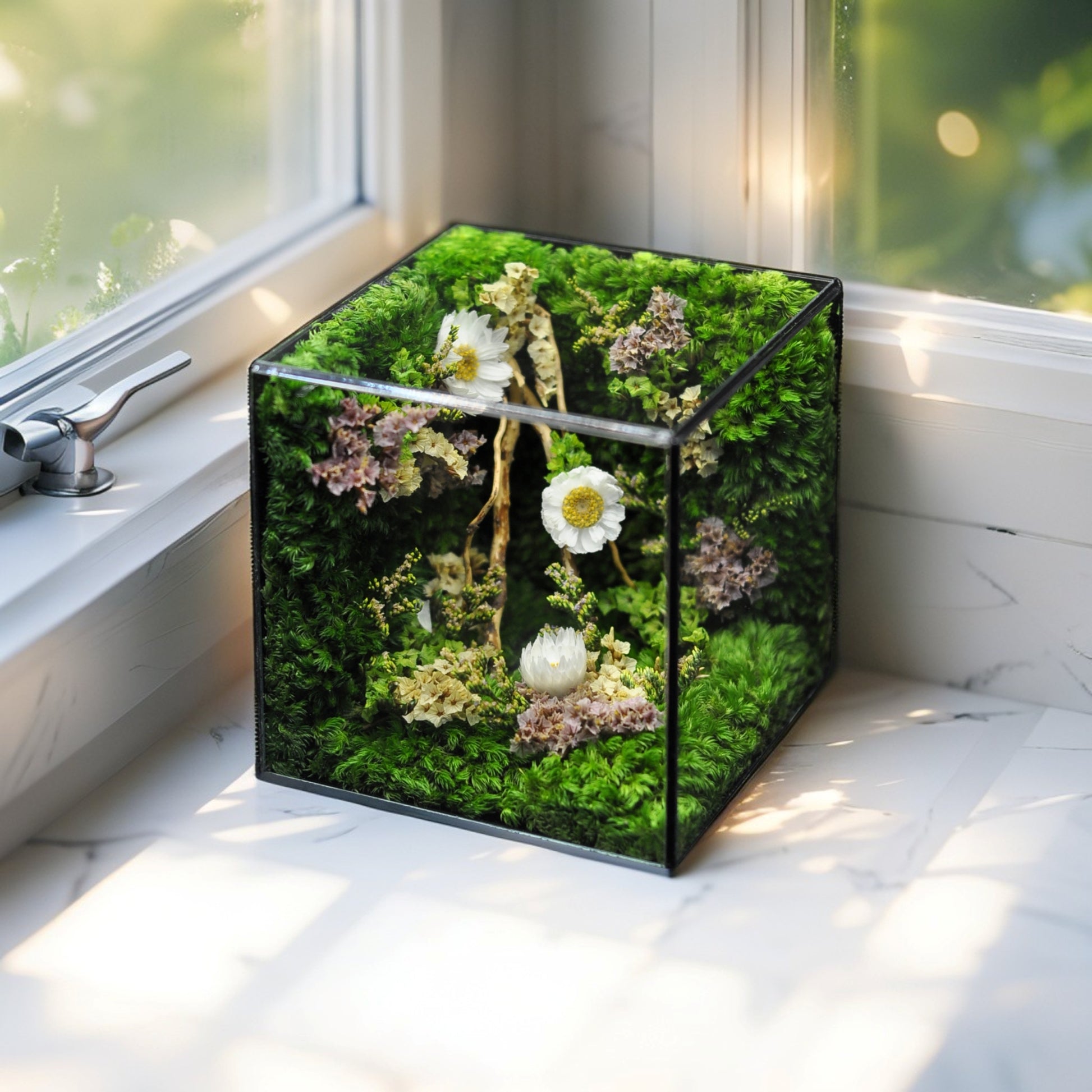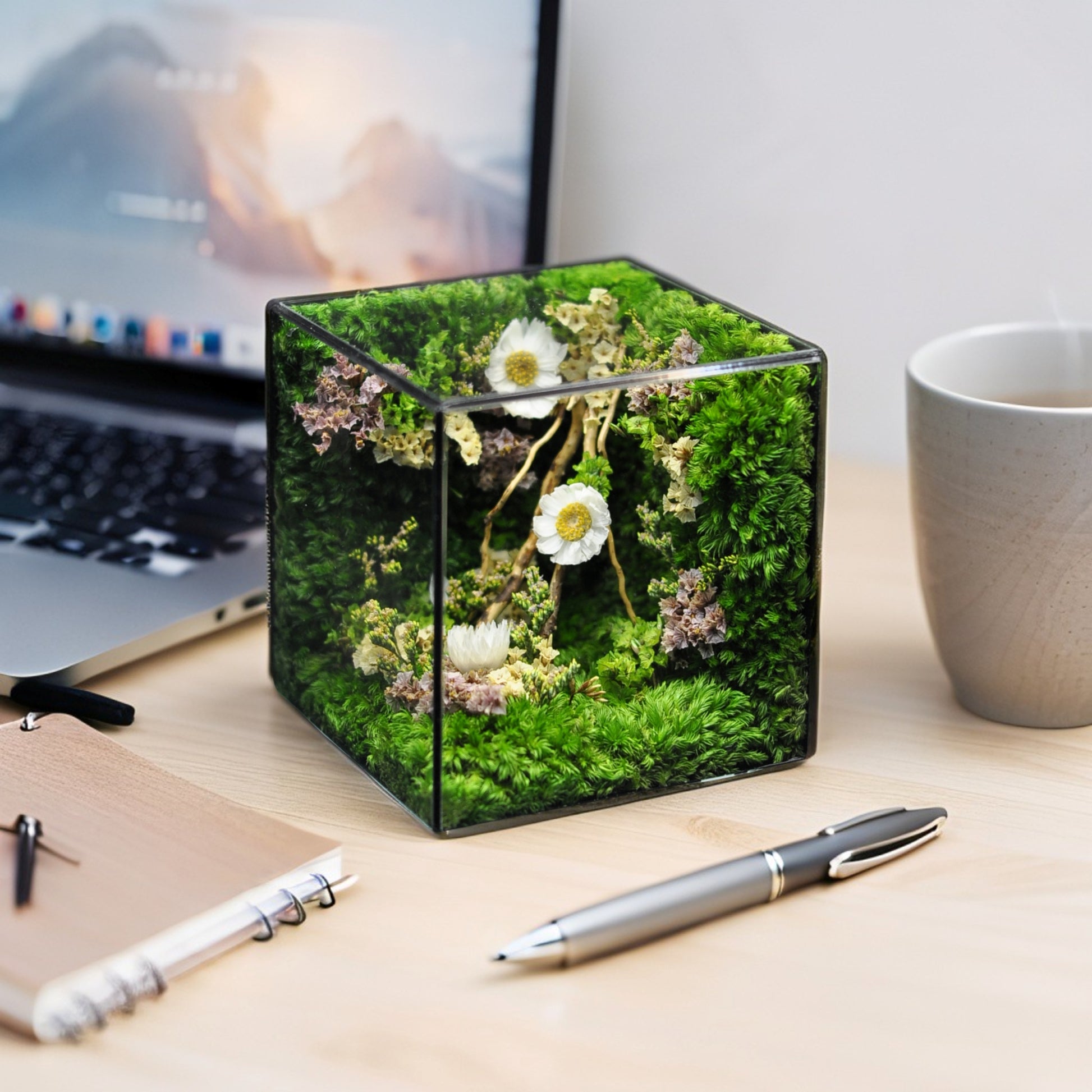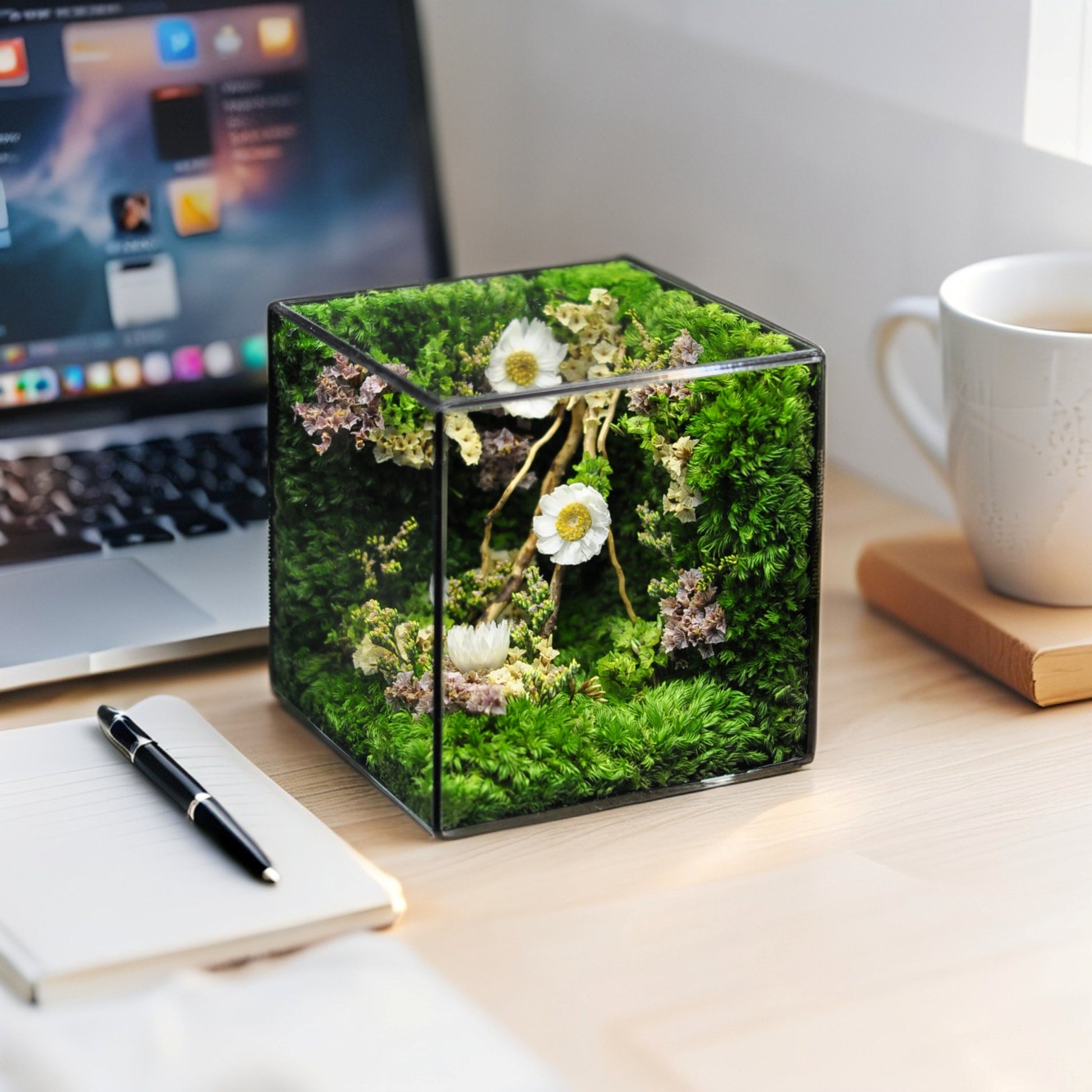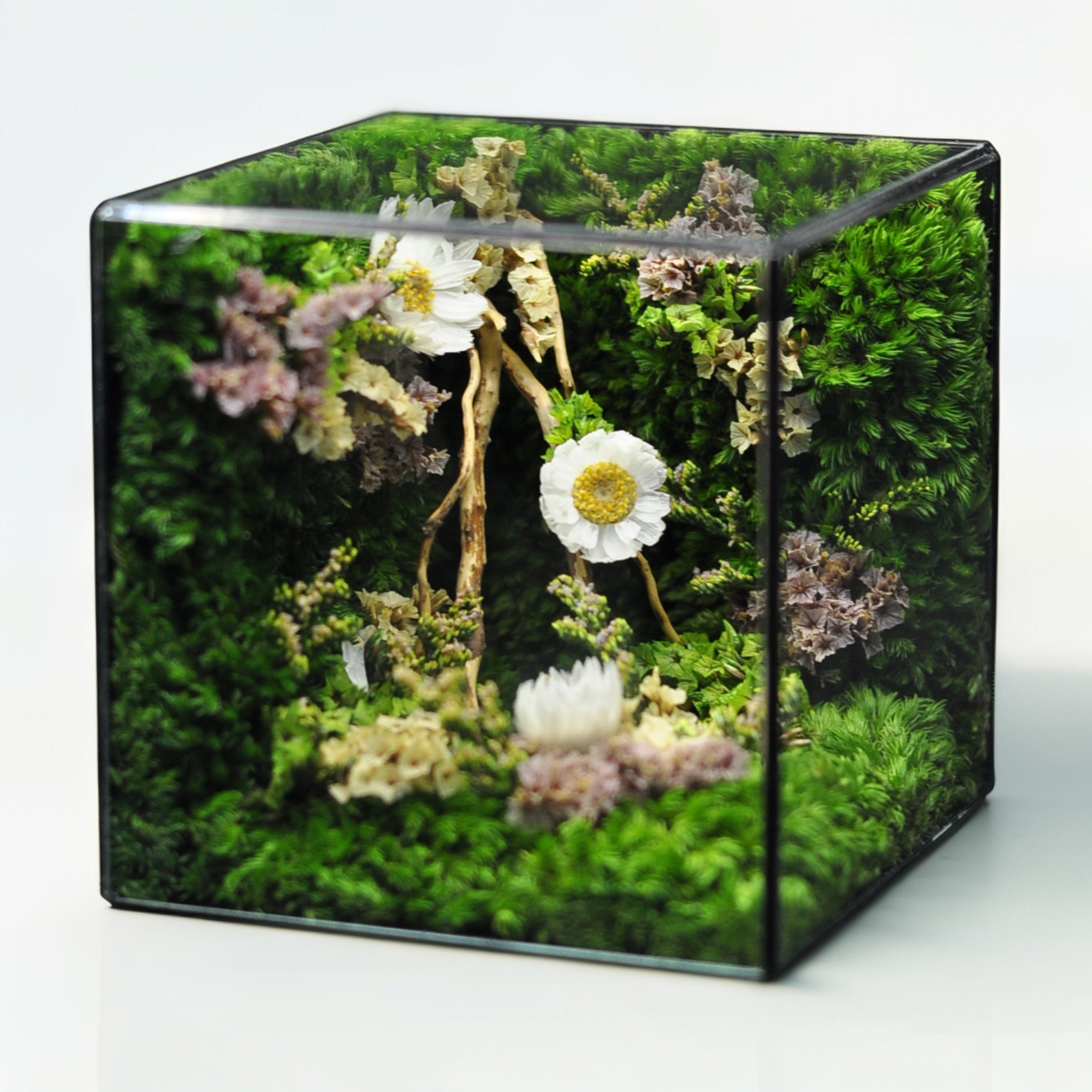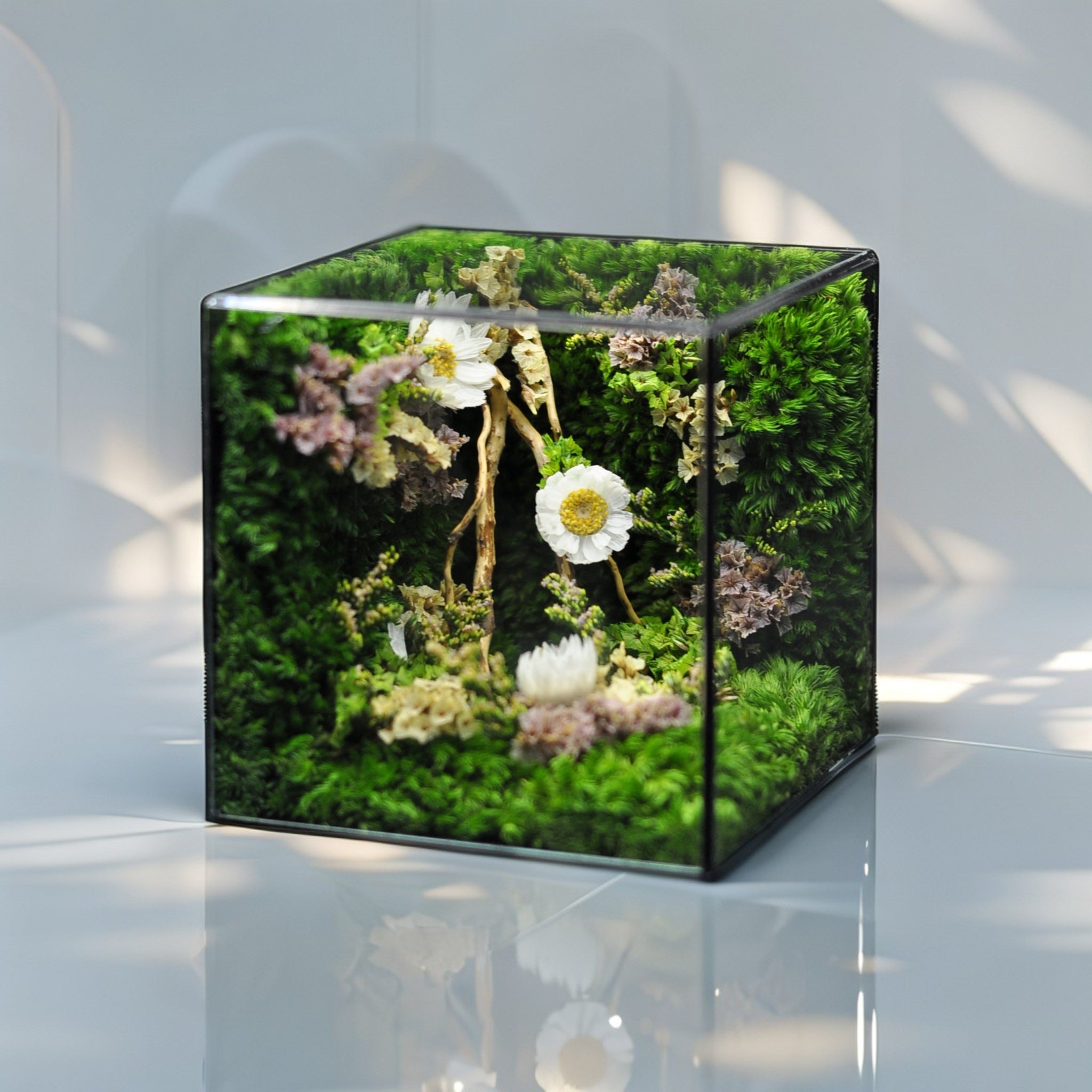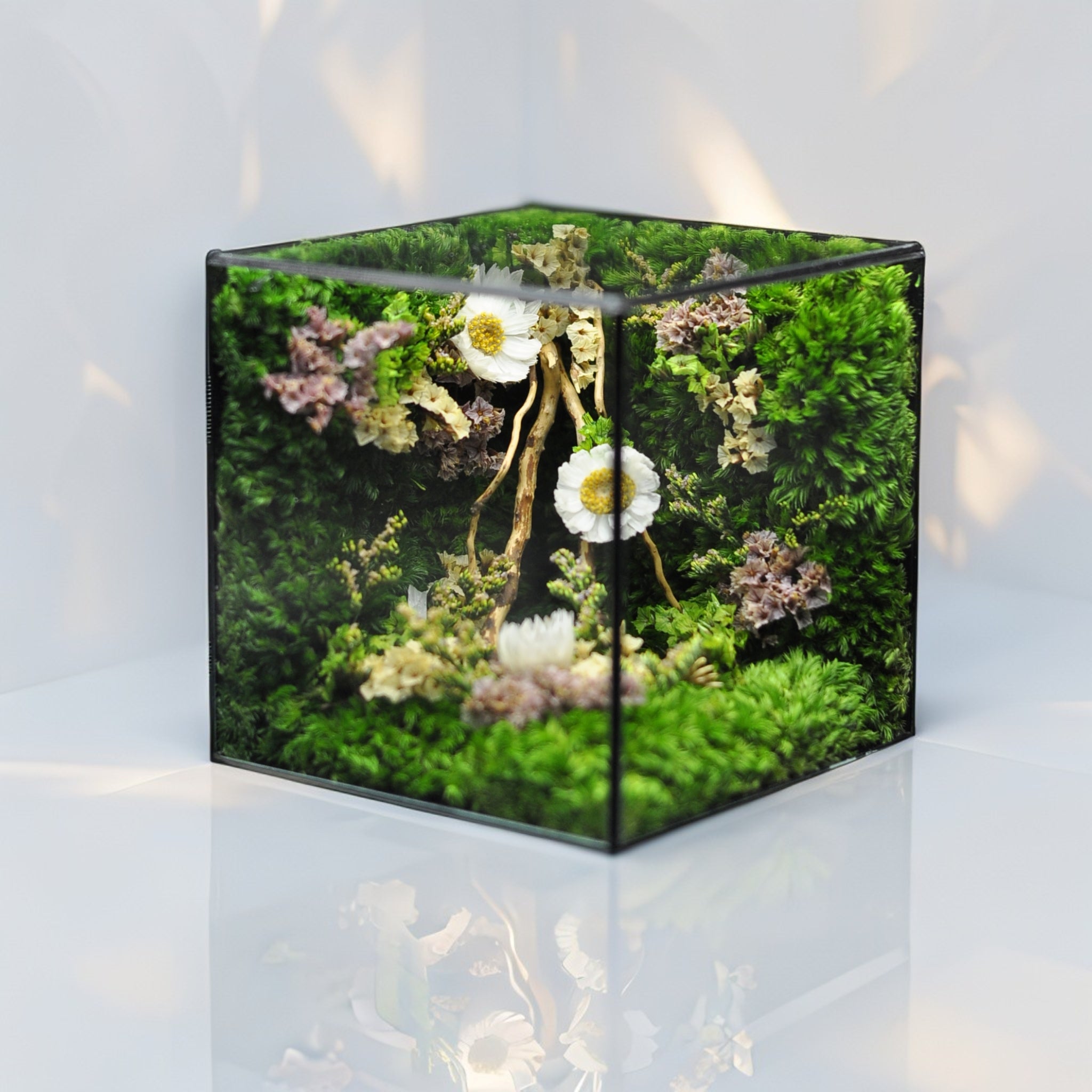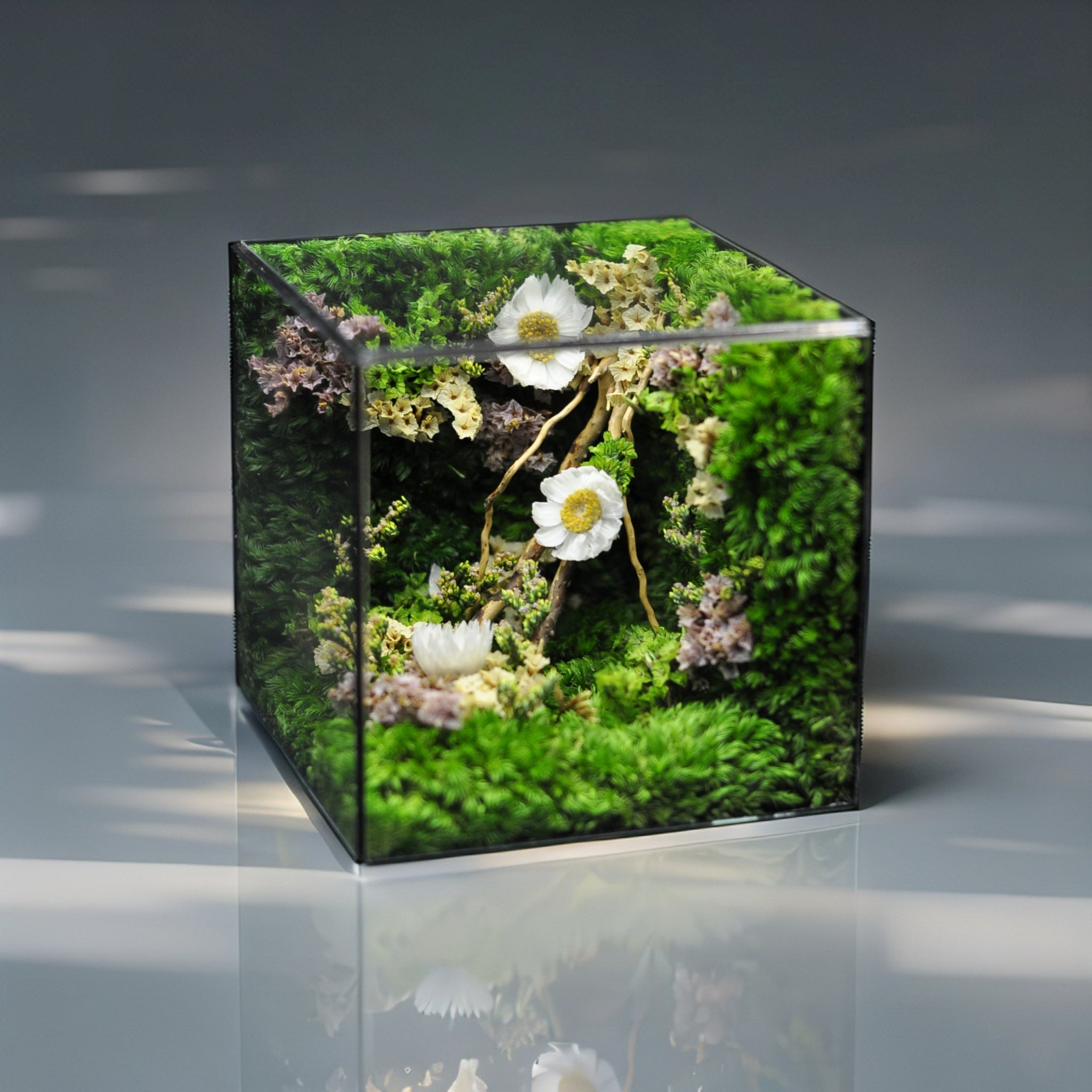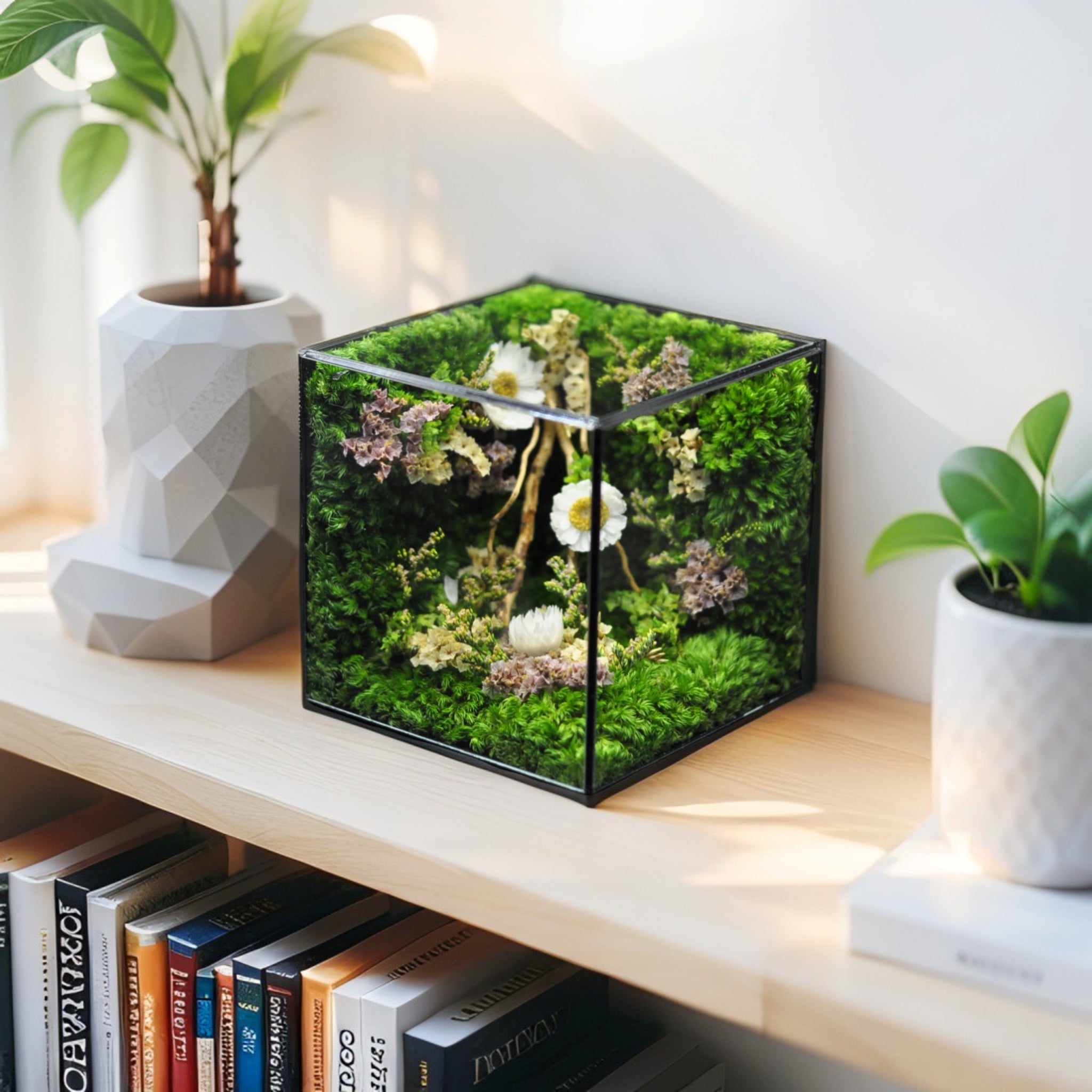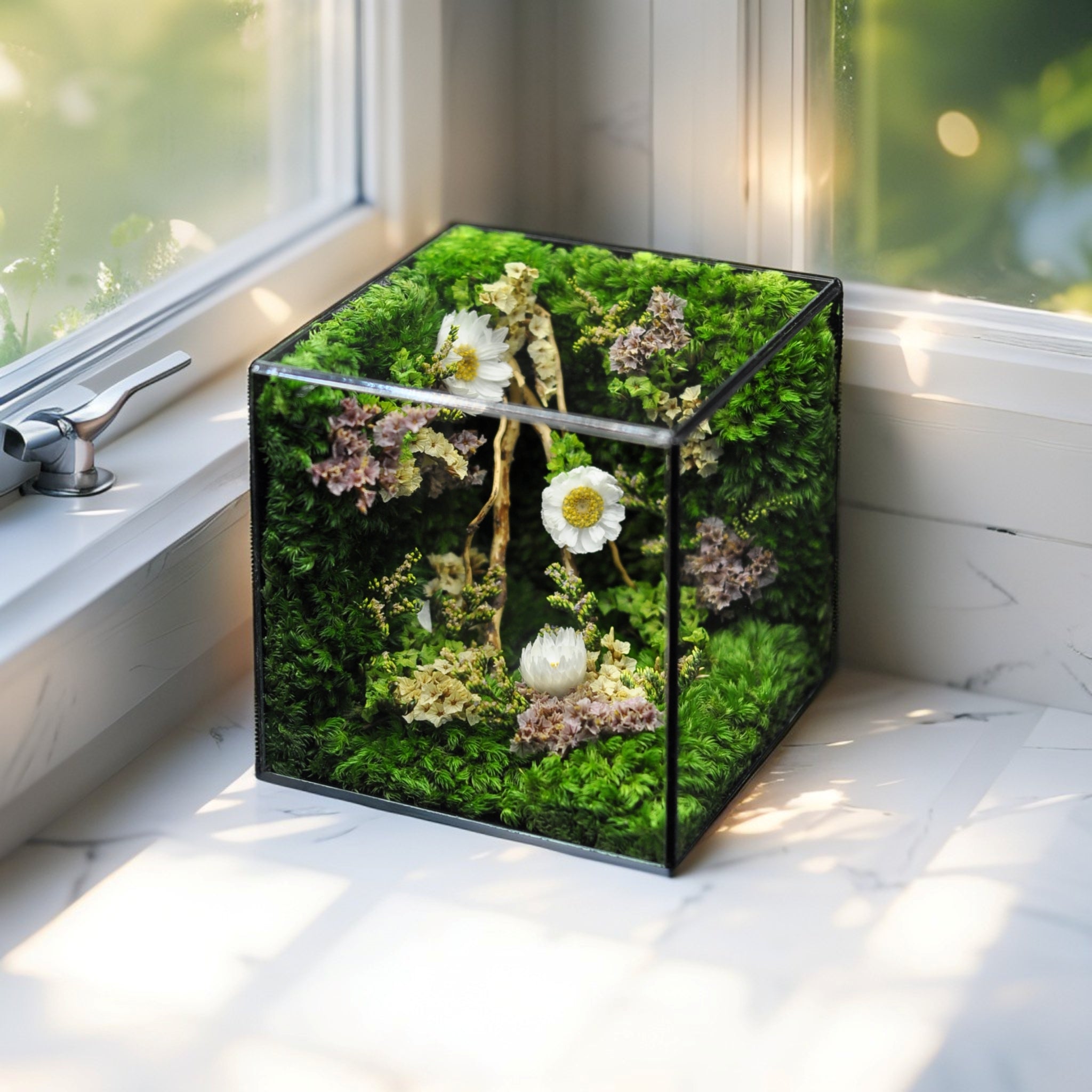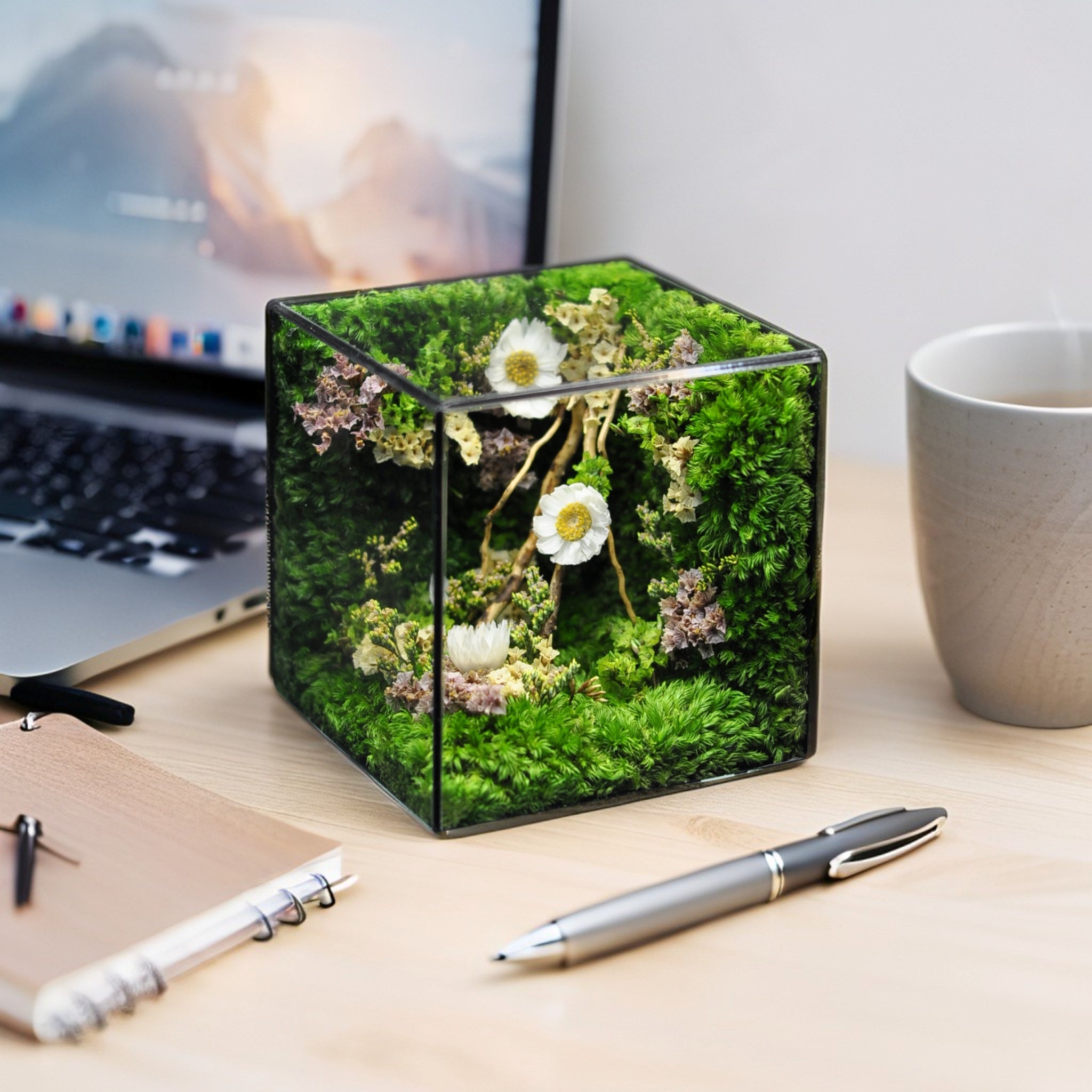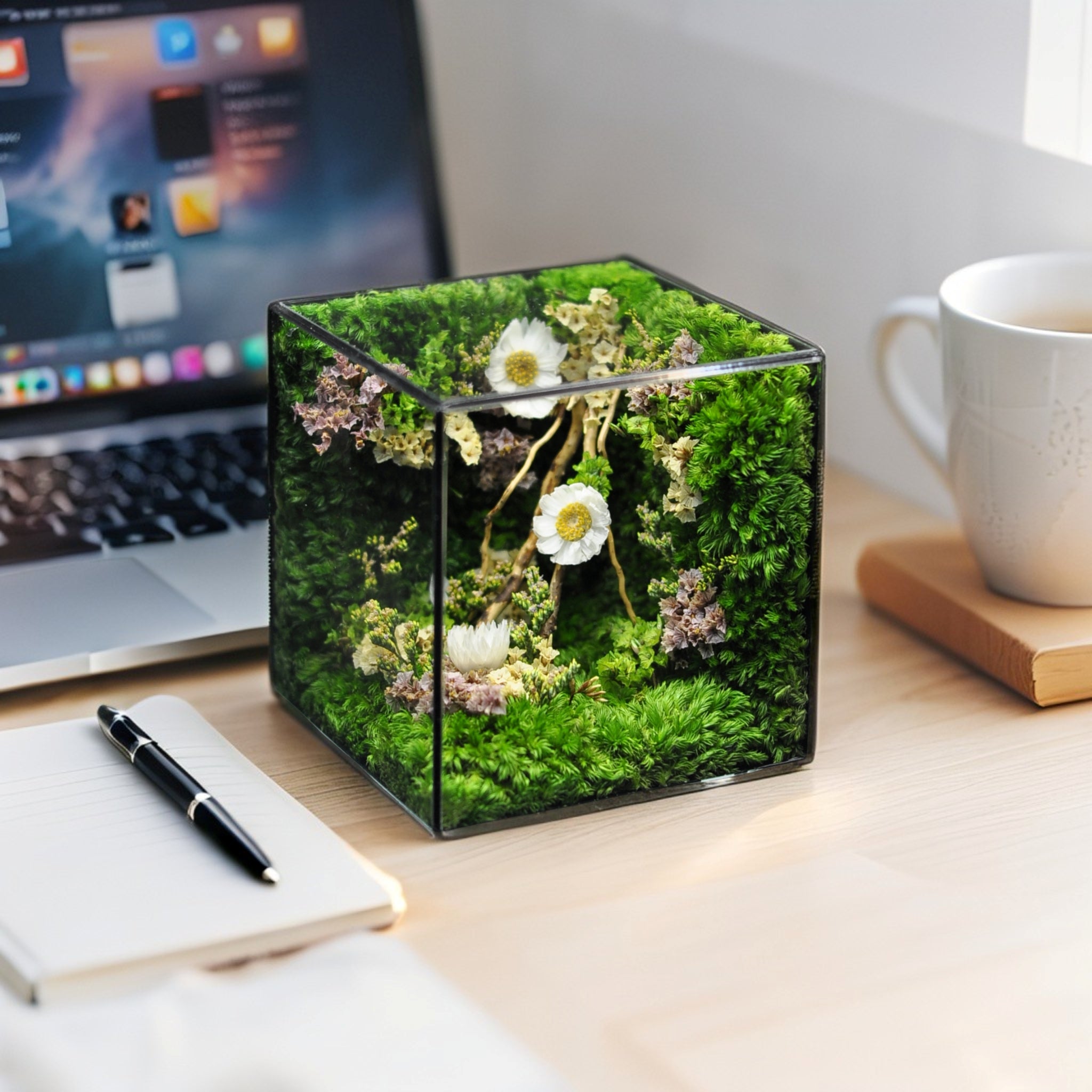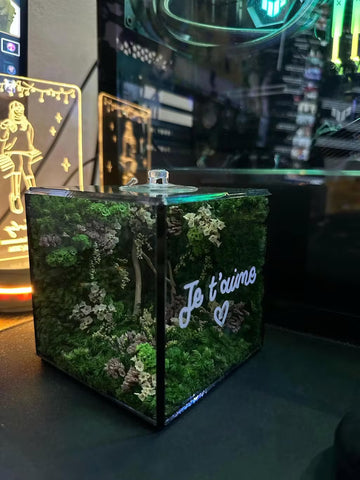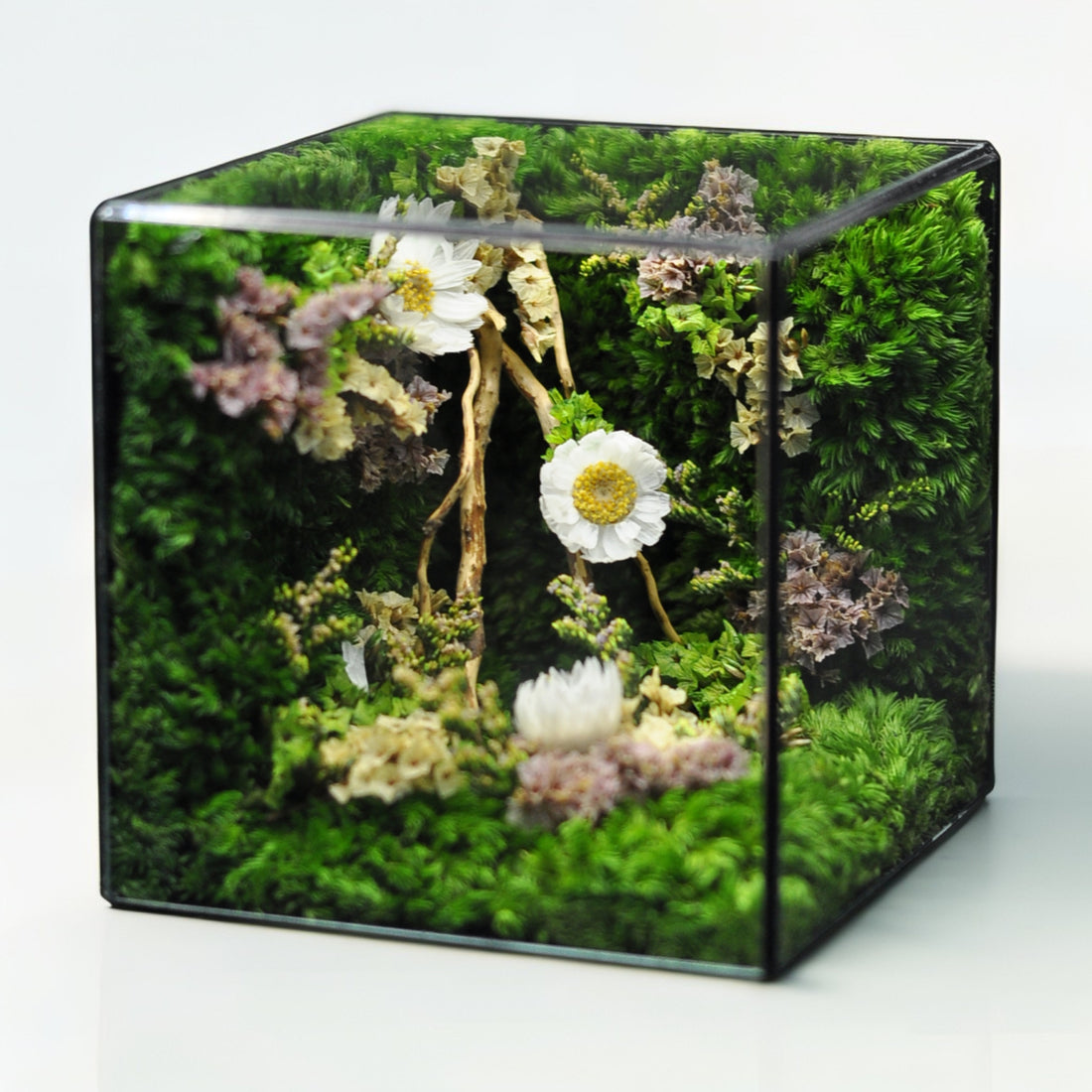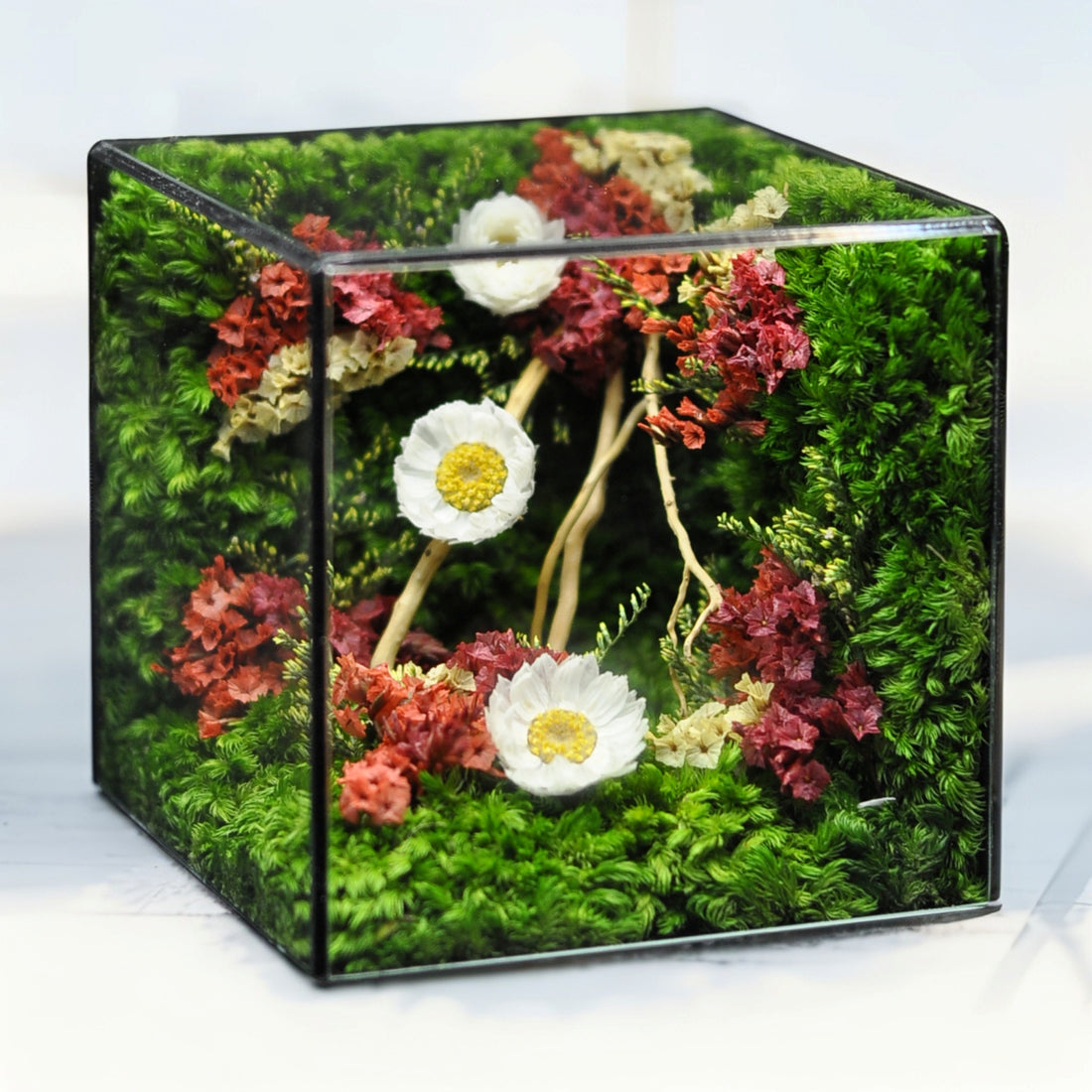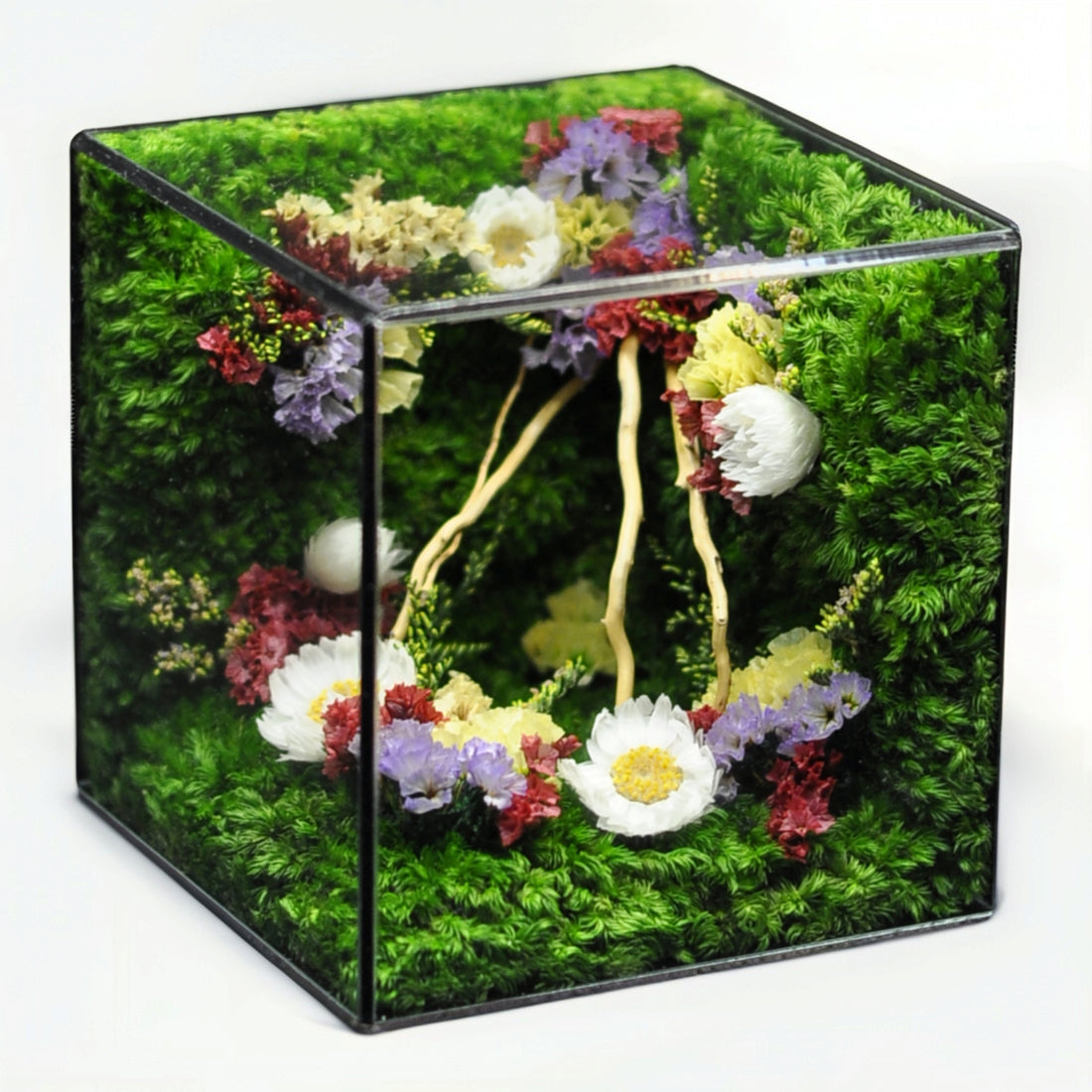Key Takeaways
Preserved flowers offer a versatile and lasting way to add natural beauty to your life through creative DIY projects. This guide explores practical and decorative ideas, complete with easy-to-follow steps and essential care tips.
- Transform preserved flowers into enduring art: Explore diverse applications of preserved flowers, moving beyond simple arrangements to create lasting pieces for home decor, unique gifts, and even wearable accessories.
- Master creative step-by-step DIY projects: Get clear, actionable tutorials for crafting beautiful items like custom wreaths, unique wall art, delicate garlands, and other personal treasures with preserved blooms.
- Elevate gifts with unique floral touches: Discover how to incorporate preserved flowers into thoughtful gift ideas and packaging, such as custom gift tags, fragrant sachets, or homemade bath salts for a personal touch.
- Create wearable art and accessories: Learn how to use preserved flowers to craft unique pins, jewelry, or other adornments, turning nature's beauty into personal style statements.
- Ensure lasting beauty with simple care: Understand fundamental maintenance tips and tricks to help your preserved flower creations retain their vibrant look and longevity for years to come.
By following simple techniques and care practices, you can unlock a world of possibilities for using preserved flowers in meaningful and beautiful ways. Read on to explore detailed instructions for each project idea and learn how to keep your floral creations stunning for years.
Introduction
Preserved flowers capture fresh-picked beauty for months—even years—offering a durable canvas for your creativity. From vibrant garlands to one-of-a-kind jewelry, these lasting blooms can brighten your home, elevate your gift-wrapping, and add a personal touch to your style.
Curious about what to do with preserved flowers? This guide walks you through ten hands-on projects—from custom wreaths and unique wall art to fragrant sachets and delicate accessories—each with clear, step-by-step instructions and simple care tips to keep your creations looking stunning. Let’s get crafting!
Understanding Preserved Flowers and Their Versatile Uses
If you’re wondering what to do with preserved flowers, you’ve come to the right place. From vibrant wall art to tactile keepsakes, preserved blooms unlock endless creative possibilities. Let’s start with the basics:
What are preserved flowers?
Preserved flowers are natural blossoms treated by one of several flower preservation techniques to maintain their fresh appearance and supple texture. Common methods include:
- Glycerin infusion: stems absorb a glycerin solution that replaces sap, locking in moisture.
- Silica gel drying: petals are gently dehydrated in silica beads, retaining shape and color.
- Freeze-drying: flowers are frozen then dehydrated under vacuum for ultimate color fidelity.
- Vacuum thermal drying: heat and pressure remove moisture while preserving structure.
Advantages of preserved vs fresh and dried blooms
Preserved blooms offer a perfect middle ground between fresh and dried arrangements:
- Longevity: enjoy color and texture for 1–3 years versus days for fresh or months for dried.
- Vibrant hues: rich pigments stay intact, unlike faded dried flowers.
- Flexible stems: pliable and soft, not brittle or crumbly.
- Maintenance-free: no watering or trimming required.
- Versatility: ideal for projects from home decor to wearable art.
Common uses for preserved flowers in home decor
Wondering how to use preserved flowers in home decor? These long-lasting blooms shine in:
- Wreaths and garlands
- Wall art and shadow boxes
- Table centerpieces and terrariums
- Lampshades and vase arrangements
- Resin crafts, jewelry, and gift packaging
With these benefits and applications in mind, let’s gather the essentials.
Essential Materials and Preparation for DIY Preserved Flower Projects
Before you dive in, assemble your toolkit, learn handling basics, and choose high-quality blooms.
Tools and supplies list for DIY preserved flower projects
- Assorted preserved flowers (roses, hydrangeas, eucalyptus, baby’s breath)
- Glycerin preservation or silica gel kits
- Floral wire (22–24 gauge) and wire cutters
- Floral tape, glue dots, low-temp hot glue gun with glue sticks
- Epoxy resin (ArtResin or similar) and UV resin (Resin Obsession)
- Silicone molds (coasters, charms, geode shapes)
- Acid-free foam board and shadow box frames (≥ 2″ depth)
- Glass cloche or terrarium vessels
- Pressing materials (flower press or heavy books)
- Laminating pouches and laminator
- Jute twine, satin ribbon, and decorative beads
- Soft-bristle brush or compressed air canister
- Floral sealant spray and clear acrylic topcoat
Basic handling and storage techniques
- Handle blooms by stems, never petals, to avoid bruising.
- Store in a cool, dark space at 40–60% relative humidity.
- Keep in airtight containers with silica gel packets to prevent moisture.
- Avoid kitchens, bathrooms, and direct sunlight to prolong vibrancy.
Tips for selecting quality preserved blooms
- Opt for petals with consistent color and no white or translucent edges.
- Squeeze a sample bloom—good-quality flowers feel supple, not brittle.
- Inspect for mold or discoloration upon arrival.
- Purchase from reputable florists or online suppliers with positive reviews.
Now that you’re prepared, let’s craft some standout home decor.
DIY Home Decor Projects
Ready to turn your preserved blooms into showstopping decor? Try these three signature projects.
1. Custom Preserved Flower Wreath
Materials and tools
- 12″–16″ grapevine wreath base
- Assorted preserved foliage (eucalyptus, magnolia, oak leaves)
- Accent blooms (roses, hypericum berries)
- 22-gauge floral wire and wire cutters
- Floral tape, low-temp hot glue gun
- Ribbon or twine for hanging
Step-by-step assembly
- Trim foliage stems to 3–4″ lengths.
- Create base layers: group 3–5 stems, wrap wire around stems and wreath base every 2″ to cover half the frame.
- Add focal flowers: insert rose stems into the grapevine and secure with floral tape or glue dots.
- Fill gaps with moss or filler sprays, gluing into place for a lush, plush texture.
- Reinforce wiring on the backside to hide hardware and ensure stability.
Hanging and display suggestions
- Hang indoors on a decorative hook, away from HVAC vents.
- Accent with battery-operated fairy lights for a warm evening glow.
- Estimated time: 1–2 hours. Budget: $30–50.
Troubleshooting tip: If stems shift, pre-glue each stem base before wiring.
2. Unique Wall Art with Dried and Preserved Flowers
Designing layouts
- Sketch a 9″×12″ design on foam board, using the rule of thirds for focal blooms.
- Choose a cohesive palette—try monochrome pinks or contrasting jewel tones.
- Visualize depth by layering larger blooms at the back and delicate sprays in front.
Mounting and framing methods
- Secure flowers to acid-free foam board using glue dots or low-temp hot glue.
- Create a 3D effect with foam spacers or cardstock risers beneath blooms.
- Insert the board into a shadow box frame (≥ 2″ depth), seal edges to block dust.
Styling tips
- Build a gallery wall mixing different frame sizes for visual drama.
- Label each frame with the flower’s Latin name or a personalized message.
Budget/time: $20–40, 2 hours per piece.
3. Delicate Preserved Flower Garland
Stringing and spacing techniques
- Cut jute twine or ribbon to your desired length.
- Make mini bundles of 2–3 stems tied with 24-gauge wire.
- Space bundles evenly every 4–6″ along the cord, twisting wire around the twine.
Decorative finishing touches
- Weave battery-operated micro-lights through the garland for evening events.
- Tie decorative tassels or loops at each end for easy hanging.
Time: 1–1.5 hours. Cost: $15–25.
Breathe new life into your living spaces—now let’s explore creative gift and packaging ideas.
Creative Gift and Packaging Ideas
Looking for unique gift ideas? Turn preserved petals into personalized presents that delight the senses.
4. Fragrant Preserved Flower Sachets
Materials and scent combinations
- 3″×4″ muslin bags or sachet pouches
- Dried lavender buds and rose petals
- Dried mint or rosemary sprigs
- Phthalate-free essential oils (lavender, rose)
- Ribbon or drawstring cord
Sewing or bagging instructions
- Combine petals, herbs, and 5–10 drops of essential oil in a bowl.
- Fill sachets half-full, pressing gently to mix fragrances.
- Tie securely; attach a custom tag with scent notes.
Budget: $5–8 per sachet. Perfect for closets, drawers, or wedding favors.
5. Homemade Bath Salts with Preserved Petals
Mixing recipes
- 2 cups Epsom salt, 1 cup sea salt, 1 tsp baking soda
- 2 tbsp dried rose petals or lavender buds
- 10–15 drops essential oil
- Stir salts and baking soda in a large bowl.
- Add petals and essential oil; mix thoroughly.
- Let blend for 30 minutes before packaging.
Packaging and labeling ideas
- Pack in clear glass jars or eco-friendly cellophane bags.
- Decorate with ribbon and personalized labels with usage instructions.
- Shelf life: up to 6 months.
6. Personalized Gift Tags with Pressed and Preserved Flowers
Flower pressing methods
- Press fresh petals between absorbent paper under heavy books for 1–2 weeks.
- Or use a commercial floral press for faster, uniform results.
Tag assembly and attachment
- Cut sturdy cardstock tags (2″×3″).
- Arrange pressed petals on tags, secure with clear-drying glue.
- Seal with laminating sheets or clear packing tape.
- Punch a hole; tie to gifts with twine or ribbon.
Pressing time: 3–14 days. Assembly: ~15 minutes per tag.
Next up: wearable accessories that last longer than fresh petals.
Wearable Art and Accessories
Wear your creativity—design lasting accessories that capture the glint of petals and fine moss.
7. Preserved Flower Jewelry and Pins
Resin vs wire-wrapping methods
- Resin: mix epoxy (24–48 h cure) or UV resin (2–5 min cure), pour base layer, position micro-blooms, top off, cure.
- Wire-wrapping: use 24-gauge wire to bind tiny buds and foliage into brooch or pendant frames.
Finishing, sealing, and care
- Polish resin pieces with fine-grit sandpaper and clear topcoat.
- Wrap wire ends with tape under the frame to avoid snags.
- Store in a jewelry box away from humidity and sunlight.
Troubleshooting: Pop resin bubbles by holding a heat gun 6–8″ away and moving it evenly.
8. Floral Resin Charms and Keychains
Resin pouring basics
- Choose silicone charm molds (hearts, circles, teardrops).
- Select epoxy for durability or UV resin for speed.
- Always work in a ventilated area with nitrile gloves and a dust-free surface.
Curing, polishing, and decorative options
- Pour a thin base layer; let gel for 15 minutes.
- Arrange petals; fill with resin; remove bubbles with a torch or heat gun.
- Cure fully (epoxy: 24–48 h; UV: 2–5 min under lamp).
- Demold; sand and polish edges; attach hardware and decorative tassels.
Cost per charm: $2–4. Time: 10–15 minutes per piece.
Ready to create keepsakes and stationery? Let’s go.
Keepsakes and Stationery
Craft memorable tokens with three-dimensional depth or pressed elegance.
9. Shadow Boxes and 3D Keepsake Frames
Arranging blooms for a 3D effect
- Layer flowers at varying depths using foam spacers or rolled cardstock.
- Use clear adhesive dots to suspend delicate petals mid-air.
Sealing and display techniques
- Seal frame edges with clear silicone to block dust.
- Hang with sturdy hardware or display on tabletop easels.
- Add a small engraved plaque with a date or message for personalization.
10. Pressed Flower Bookmarks and Stationery
Pressing and laminating processes
- Press petals as described in Gift Tags section.
- Position pressed flowers on cardstock or printed stationery.
- Sandwich between laminating sheets; run through a home laminator.
Gift-ready presentation ideas
- Bundle bookmarks in sets of five; tie with a custom ribbon.
- Add envelopes printed with floral motifs for a stationery kit.
Nearly time to enjoy—and maintain—your creations.
Care and Maintenance for Long-Lasting Beauty
Follow these guidelines to keep preserved flower projects looking fresh.
How long do preserved flowers last and how do I care for them?
Preserved arrangements typically last 1–3 years. To care for them:
- Never water—they no longer need hydration.
- Lightly mist with floral sealant spray every 6–12 months to refresh sheen.
Avoiding sunlight, moisture, and pests
- Display in climate-controlled interiors (40–60% humidity).
- Keep away from direct sunlight, kitchens, and bathrooms.
- Place silica gel packs in closed displays to absorb excess moisture.
Cleaning, dusting, and rejuvenation tips
- Remove dust with a soft-bristle brush or gentle compressed air.
- Repair brittle petals by lightly coating with clear hairspray or sealant.
- Store spare buds in airtight containers with silica gel for quick fixes.
Frequently Asked Questions
Can you water preserved flowers?
No—introducing water reactivates glycerin and can cause mold or color changes. Instead, use a light mist of floral sealant to restore luster.
Are preserved flowers eco-friendly?
Yes. They reduce water consumption and waste compared to fresh blooms. Opt for suppliers using non-toxic dyes and sustainable harvesting methods.
How to repair faded or brittle petals?
Gently apply floral sealant or clear hairspray from 6–8″ away. For broken stems, secure with 22-gauge wire and floral tape.
Additional Resources and Next Steps
Recommended preservation kits, tools, and suppliers
- Martha Stewart Glycerin Flower Preserving Kit
- Silica Gel Drying Kit (Amazon Basics)
- ArtResin Epoxy, Resin Obsession UV Resin
- 22 & 24-Gauge Floral Wire (ACE Hardware)
- Online suppliers: Preserved Blooms Co., EcoFlorals Direct [VERIFY FACT: supplier accuracy]
Online tutorials, communities, and inspiration galleries
- The Spruce Crafts: Preserved Flowers section
- Facebook group “Preserved Floral Crafting”
- Instagram & Pinterest hashtags: #preservedflowers #floralDIY
Advanced flower preservation techniques
- Freeze-drying for peak color retention
- Vacuum thermal drying for dimensional stability
- Custom glycerin blends (add sugar or alcohol bases)
With these projects, tips, and resources, you now have a complete answer to what to do with preserved flowers—whether you’re decorating your home, crafting gifts, or launching your own floral creations. Enjoy exploring every vibrant, tactile possibility!
Conclusion
Preserved flowers blend natural beauty with enduring versatility, empowering you to craft everything from custom wreaths and shadow-box art to fragrant sachets, wearable jewelry, and keepsakes. By mastering simple preservation and design techniques—whether silica gel drying, resin embedding, or wire-wrapping—you achieve vibrant, maintenance-free creations that last for years. Thoughtful care, such as humidity control, occasional sealant misting, and gentle dusting, ensures your floral projects remain fresh and striking. Whether you’re decorating your home, creating heartfelt gifts, or launching a small craft business, preserved blooms open a world of tactile, sustainable possibilities. Ready to transform petals into personalized art? Gather your tools and let preserved flowers bring lasting charm and creativity into your life.
Frequently Asked Questions (FAQ)
Q: How long do preserved flowers last and how do I care for them?
A: Preserved arrangements typically last 1–3 years. To care for them, never water the blooms—instead lightly mist them with floral sealant spray every 6–12 months to refresh their sheen.
Q: What are creative DIY projects using preserved flowers?
A: You can turn preserved blooms into home decor like wreaths, garlands, wall art and shadow boxes; craft gift items such as sachets, bath salts and personalized gift tags; design wearable pieces like resin jewelry, pins and charms; and make keepsakes or stationery including 3D shadow boxes and pressed‐flower bookmarks.
Q: How can I use preserved flowers for gift packaging?
A: Incorporate petals into fragrant sachets by combining them with dried herbs and essential oils in muslin bags; mix them into homemade bath salts and package in jars or cellophane bags; or glue pressed flowers onto cardstock tags, seal with laminating sheets, and tie them to gifts with twine or ribbon.
Q: How should I handle and store preserved flowers to maintain their quality?
A: Handle flowers by the stems only to avoid bruising petals. Store them in a cool, dark space at 40–60% relative humidity, inside airtight containers with silica gel packets. Keep them away from kitchens, bathrooms and direct sunlight.
Q: Can you water preserved flowers?
A: No—introducing water reactivates glycerin and can cause mold or color changes. Instead, use a light mist of floral sealant to restore luster.
Q: How do I repair faded or brittle preserved flower petals?
A: Gently spray petals from 6–8″ away with floral sealant or clear hairspray. For broken stems, secure them with 22-gauge wire and floral tape.
Q: Are preserved flowers eco-friendly?
A: Yes. They reduce water consumption and waste compared to fresh blooms, especially when sourced from suppliers using non-toxic dyes and sustainable harvesting methods.




